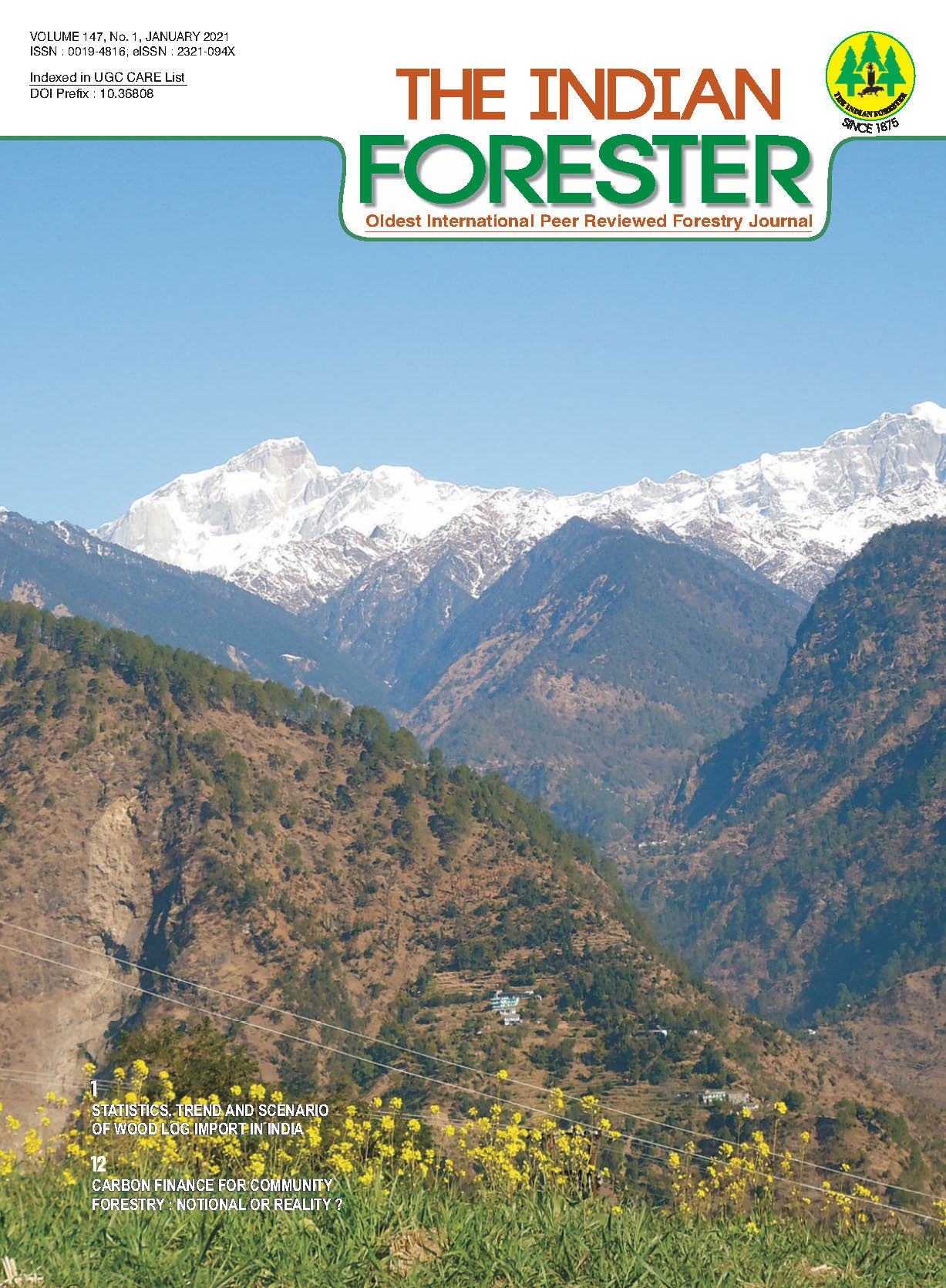Study on Development and Characterization of Epoxy Resin Bamboo Strip Board
DOI:
https://doi.org/10.36808/if/2021/v147i1/152866Keywords:
Bamboo, Epoxy Resin, Strip Board.Abstract
In day to day life, people use various panel products and components made up of a variety of materials such as plastic and metals. But these materials are non renewable and also create environmental problems. Hence alternative materials produced from renewable resources, which are having better strength and other desirable properties are in demand. Epoxy resin having good mechanical, thermal and electrical properties is widely used as an engineering material. In the present study, epoxy resin system was used for bamboo strip composite bonding. Epoxy adhesive was synthesized from epichorohydrin and Cardanol modified phenolic resin with an optimized molar ratio of 1:10. Three layered bamboo strip composites have developed using epoxy adhesive. The panels were evaluated for the physical and mechanical properties as per relevant Indian standard. The results indicate that epoxy resin bonded bamboo composites yield better strength properties and meets the requirements.References
Bai X., Lee A.W. C., Thompson L.L. and Rosowsky D.V. (1999). Finite element analysis of moso bamboo reinforced southern pine OSB composite beam. Wood and fibre science, 32: 403-415.
Biswas S. (2012). Mechanical properties of Bamboo epoxy composites structural application. Advances in Material Research, 1: 221-231.
Jain S., Kumar R. and Jindal U.C. (1992). Mechanical Behaviour of Bamboo and Bamboo composites. Journal of Material Science, 27: 4598-4604.
Janseen J.J.A. (1981). Bamboo in Building structure. PhD Thesis, Eindhoven University of Technology, Netherland; 238 pp.
Javadian A., Wieloplsi M., Smith Ian F.C., Hebel Dirk E. (2016). Bond behaviour study of newly developed bamboo composite reinforcement in concrete. Construction and Building Material, 122: 110-117.
Lee H. and Neville K. (1967) Handbook of epoxy resin. McGrew Hill, New York, 57.
Lee Andy W.C., Bai X. and Peralta P.N. (1996). Physical and mechanical properties of strand board made from moso bamboo. Forest product Journal, 46: 84-88.
Lee Andy W.C., Bai X. and Bangi A.P. (1998). Selected properties of laboratory made laminated bamboo lumber. Holzforschung, 52: 207-210.
Mansur A. (2000). Analysis of Calcutta Bamboo for structural composite material. PhD Thesis, Virginia polytechnic institute and state university, Balcksburg, Virginia: 210 pp.
Petrie E.M. (2000). Handbook of adhesive and sealants, McGrew Hill, New York, 355-373.
Rassiah K., Megat Ahmad M.M.H. and Ali A. (2014). Mechanical properties of laminated bamboo strips from Gigantochola Scortechini/ polyester composites. Materials and Design, 57: 551-559
Salva M. (1977). Epoxy resin adhesive, in: Handbook of adhesive, I. Skiest (Ed.) Van Nostrand Reinhold company, New York, 434-445.
Silvia G.P., Gilberto Del R. and Alejandro U. (2006). Comparative study on the adhesive properties of different epoxy resin. International Journal of Adhesive and Adhesion, 26: 125-132.
Verma C.S., Chariar V.M. and Purohit R. (2012). Tensile strength analysis of bamboo and layered laminated bamboo composite. International Journal of Engineering Research and Application, 2: 1253-1264.
Wani R.S. and Shitole R.R (2017). Tensile testing of Bamboo Fiber Reinforced epoxy composite. IOSR Journal of Mechanical and Civil Engineering, 07:11.
Downloads
Downloads
Published
How to Cite
Issue
Section
License
Unless otherwise stated, copyright or similar rights in all materials presented on the site, including graphical images, are owned by Indian Forester.





